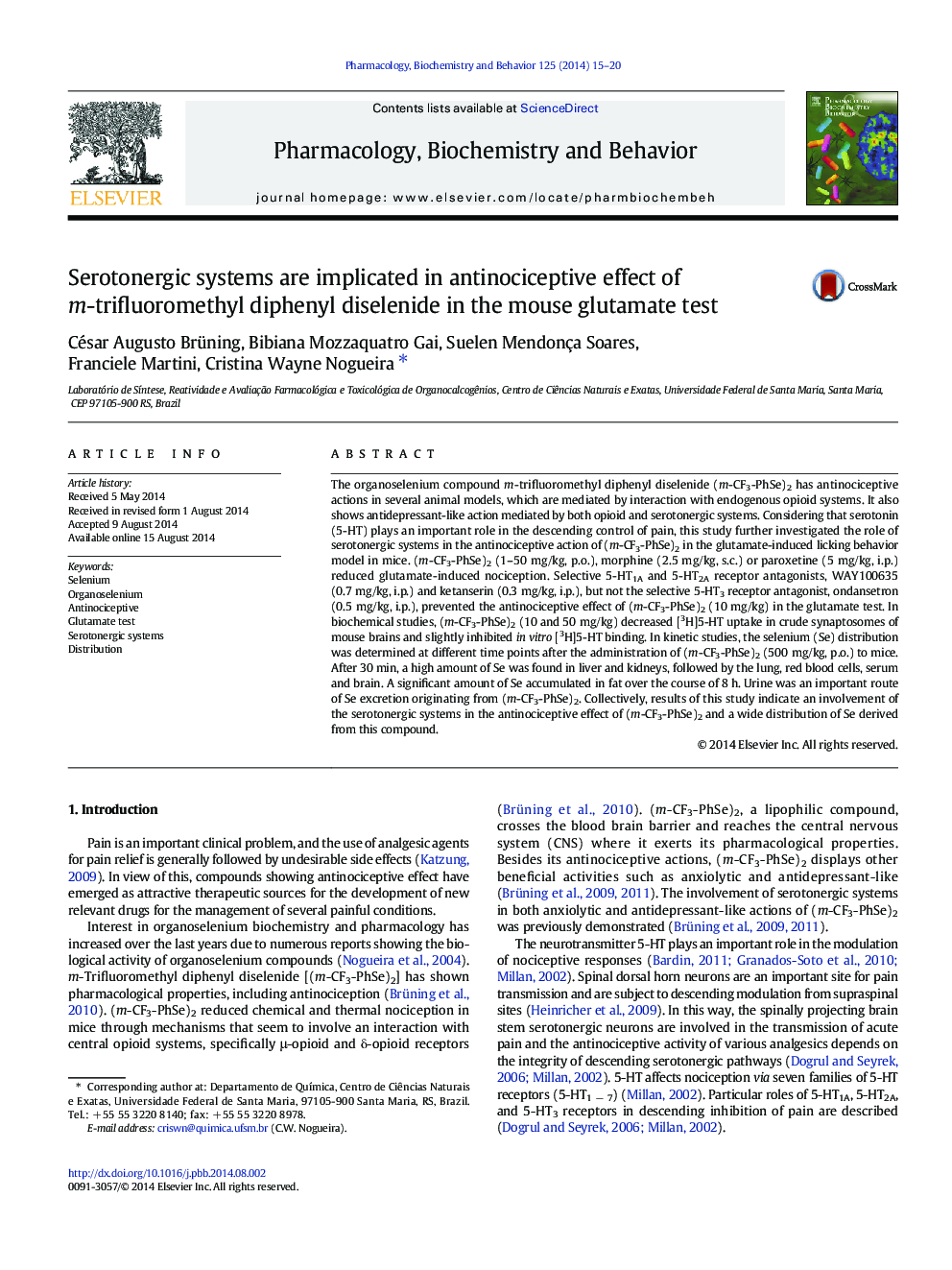| کد مقاله | کد نشریه | سال انتشار | مقاله انگلیسی | نسخه تمام متن |
|---|---|---|---|---|
| 2012966 | 1541859 | 2014 | 6 صفحه PDF | دانلود رایگان |

• (m-CF3-PhSe)2 shows antinociceptive action in the glutamate test in mice.
• Serotonergic systems are involved with the antinociceptive effect of (m-CF3-PhSe)2.
• (m-CF3-PhSe)2 inhibits the [3H]5-HT uptake from mouse synaptosome ex vivo.
• (m-CF3-PhSe)2 is widely distributed among tissues.
The organoselenium compound m-trifluoromethyl diphenyl diselenide (m-CF3-PhSe)2 has antinociceptive actions in several animal models, which are mediated by interaction with endogenous opioid systems. It also shows antidepressant-like action mediated by both opioid and serotonergic systems. Considering that serotonin (5-HT) plays an important role in the descending control of pain, this study further investigated the role of serotonergic systems in the antinociceptive action of (m-CF3-PhSe)2 in the glutamate-induced licking behavior model in mice. (m-CF3-PhSe)2 (1–50 mg/kg, p.o.), morphine (2.5 mg/kg, s.c.) or paroxetine (5 mg/kg, i.p.) reduced glutamate-induced nociception. Selective 5-HT1A and 5-HT2A receptor antagonists, WAY100635 (0.7 mg/kg, i.p.) and ketanserin (0.3 mg/kg, i.p.), but not the selective 5-HT3 receptor antagonist, ondansetron (0.5 mg/kg, i.p.), prevented the antinociceptive effect of (m-CF3-PhSe)2 (10 mg/kg) in the glutamate test. In biochemical studies, (m-CF3-PhSe)2 (10 and 50 mg/kg) decreased [3H]5-HT uptake in crude synaptosomes of mouse brains and slightly inhibited in vitro [3H]5-HT binding. In kinetic studies, the selenium (Se) distribution was determined at different time points after the administration of (m-CF3-PhSe)2 (500 mg/kg, p.o.) to mice. After 30 min, a high amount of Se was found in liver and kidneys, followed by the lung, red blood cells, serum and brain. A significant amount of Se accumulated in fat over the course of 8 h. Urine was an important route of Se excretion originating from (m-CF3-PhSe)2. Collectively, results of this study indicate an involvement of the serotonergic systems in the antinociceptive effect of (m-CF3-PhSe)2 and a wide distribution of Se derived from this compound.
Journal: Pharmacology Biochemistry and Behavior - Volume 125, October 2014, Pages 15–20